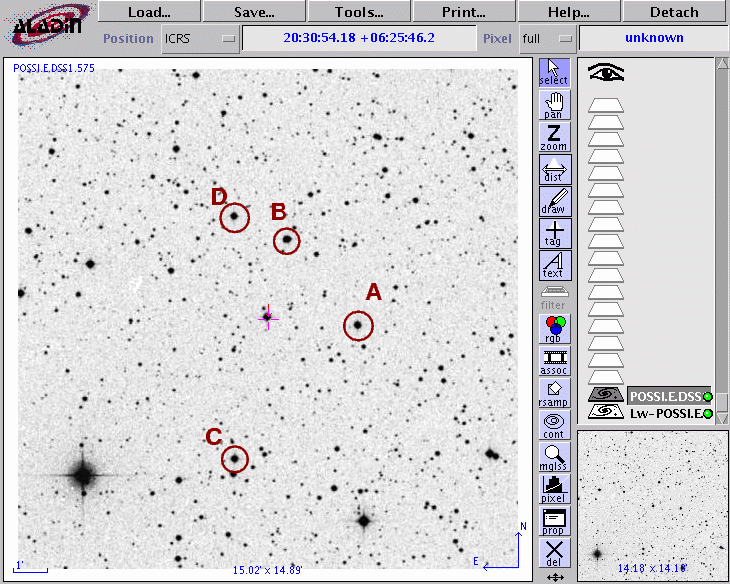
On the night of UT Jun 15, 2008, the SDSS Photometric Telescope ("PT" for short) took a series of exposures of the field around WASP-2 . We detected a full transit clearly; the egress may have occurred a bit earlier than predicted.
Notes from the night
This is a chart of the field. WASP-2 is the bright star indicated by the crosshairs. I have marked four bright stars nearby which will appear later in graphs.

The star marked "A" has Tycho-2 magnitudes of Bt=13.1, Vt=12.0. The host star of WASP-2 itself has a magnitude V=11.98, according to WASP-1b and WASP-2b: Two new transiting exoplanets detected with SuperWASP and SOPHIE.
Following the procedures outlined by Kent Honeycutt's article on inhomogeneous ensemble photometry, I used all stars available in each image to define a reference frame, and measured each star against this frame. You can find the software package used to do the ensemble photometry online; it's free!
The conditions on this night were good. The graph below shows the amount by which instrumental magnitudes from each image needed to be shifted to match the ensemble reference. On a clear night, this graph would show a straight horizontal line.
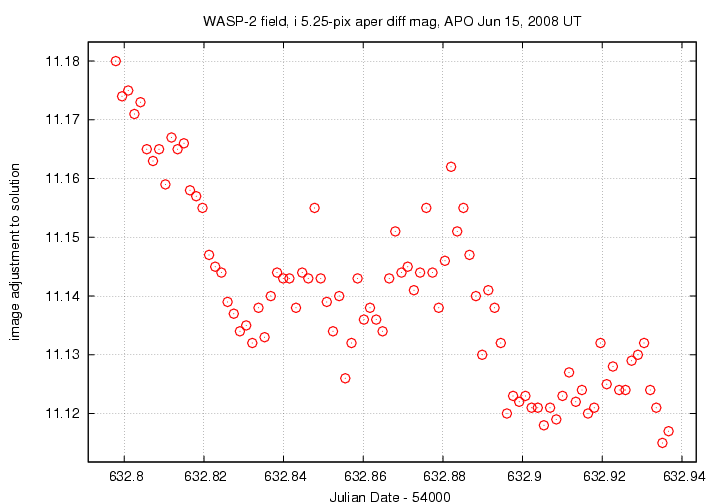
Below is a graph of the scatter in differential magnitude versus magnitude in the ensemble solution.
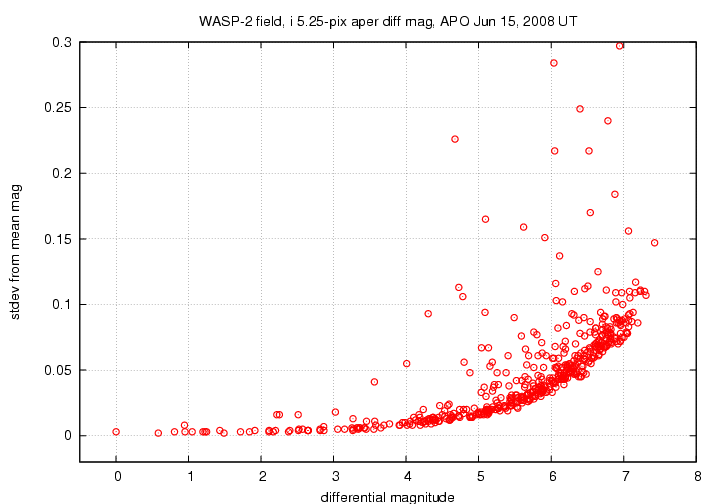
WASP-2 is the star at differential mag 0.94; note its slightly elevated scatter. The "noise floor" in these measurements is about 0.002 mag -- excellent!
Below are the light curves for the target and four comparison stars in the field.
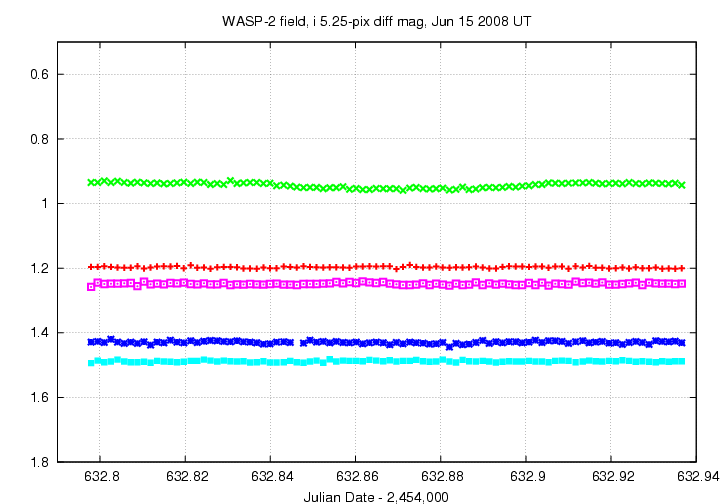
in this closeup, I have shifted the data for several comparison stars to move them closer in magnitude to the target.
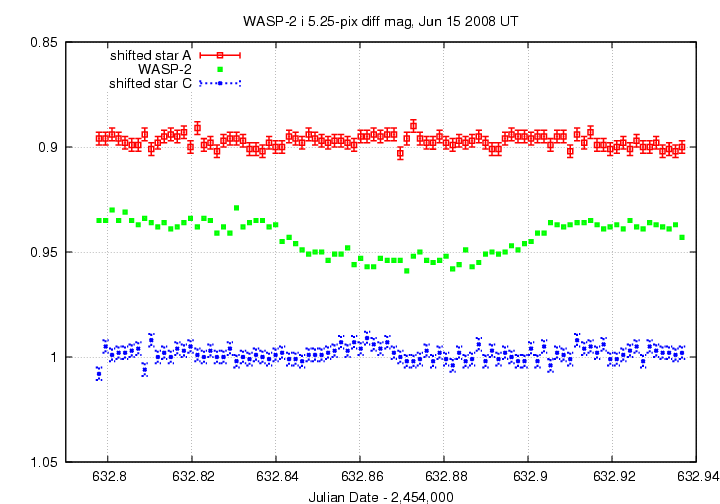
My eyeball estimate for the ingress is 632.84, and for the egress 632.905.
Justin's notes indicate that the ephemeris predicts ingress at 632.839, which agrees well with my eyeball estimate. The predicted egress is at 632.915, about 14 minutes later than my estimate. However, some of the difference is due to the HJD correction.
You can grab the measurements for your own analysis. Below is a table with three flavors of time, plus the differential magnitude of WASP-2 and an estimate of the uncertainty in each measurement. I show the first few lines of the file to give you an idea of its format.
# Measurements of WASP-2 made with APO PT, Jun 15, 2008 UT. # Each exposure 50 seconds long in SDSS i-band; # Tabulated times are midexposure (FITS header time - half exposure length) # and accurate only to +/- 1 second (??). # 'mag' is a differential magnitude based on ensemble photometry # using a circular aperture of radius 5.25 arcseconds. # # UT day JD-2,450,000 HJD-2,450,000 mag uncert Jun15.79791 4632.79791 4632.80152 0.935 0.003 Jun15.79947 4632.79947 4632.80308 0.935 0.003 Jun15.80101 4632.80101 4632.80462 0.930 0.003 Jun15.80256 4632.80256 4632.80617 0.935 0.003
Last modified 7/3/2008 by MWR.